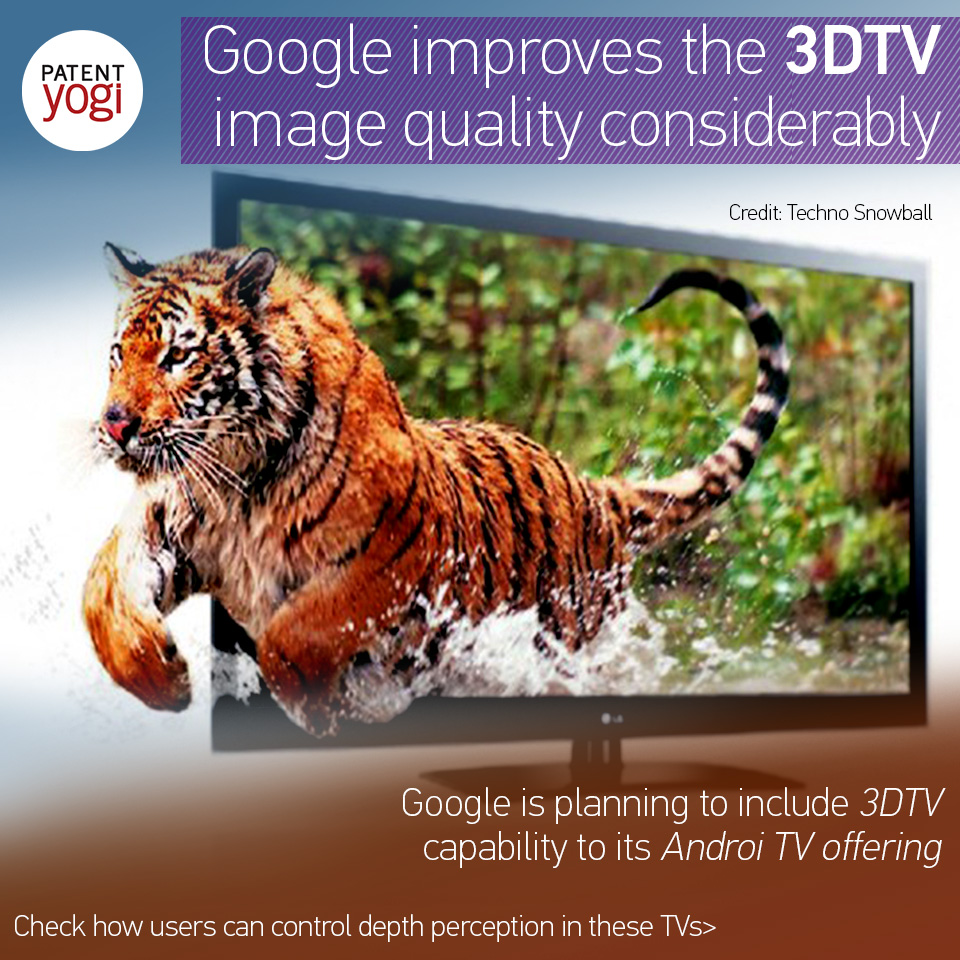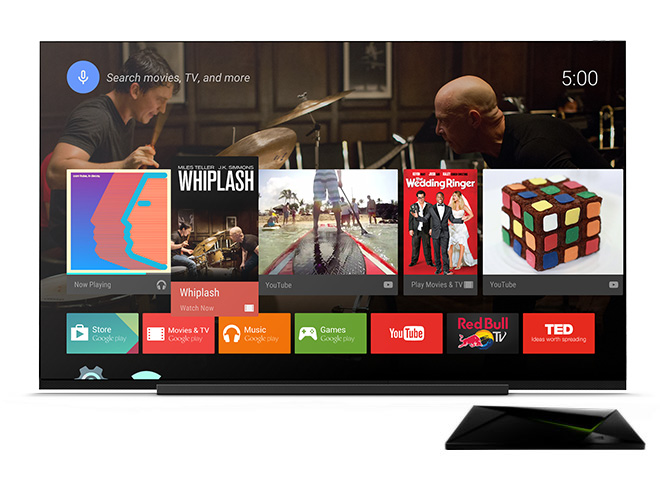Google is targeting the TV segment with its Android TV, a smart TV platform. It creates an interactive television experience through a 10-foot user interface.
Now, Google is planning to provide 3D capability in its TV offering. Depth perception for three-dimensional television (3DTV) is provided by having two views, one for the left eye and another for the right eye, for a user. Traditionally, these two views are created when recording the video. However, the depth information, may also be artificially generated from an analysis of high-definition two-dimensional (2D) images to create left eye and right eye views. Google plans to generate the depth information in the TV itself.

Traditionally, one of the problems associated with viewing 2D-to-3D generated video is that the video seems dim because the glasses used to view 3DTV images block some of the light to a viewer’s eyes. Further, different viewers have different sensitivities to depth perception. For example, some viewers do not like an object coming out of the television screen close to their eyes because it strains their eyes or creates an unsettling feeling. This depth perception sensitivity may become more pronounced when 2D-to-3D program material transitions from a relatively static display to a display with high motion content or multiple scene changes.

A recent patent application Google discloses a 2D-to-3D converter. A high-definition 2D video signal is fed to the 2D-to-3D converter. The artificially-generated 3D video signal from the 2D-to-3D converter output compensates for the partial light blockage caused by 3DTV glasses and also implements depth perception adjustments to accommodate preferences of an individual viewer.

Additional 3D image settings, such as contrast and focus (also called focal point), can also be adjusted by an individual viewer. Brightness refers to the perceived light from a displayed scene. Depth refers to 3D depth provided by a scene, which can be adjusted by changing parallax values created during the 2D-to-3D conversion process. Contrast refers to a ratio of luminance of a white video signal to luminance of a black video signal. And focus refers to which part of the scene goes inside the TV display and which part pops out of the TV display. From the top-to-bottom of a scene, a certain percentage of the top may seem to be behind the plane of the screen and the remaining percentage of the bottom of the scene may seem to be in front of the screen. Each of these settings may be manually adjusted by a user to suit the user’s personal preferences.
The technology may help Google gain a strong footing in the TV business.
Publication number: US 20160286196
Patent Title: Methods And Apparatus For 3DTV Image Adjustment
Publication date: 29 Sep 2016
Filing date: 3 Jun 2016
Inventors: Ajay K. Luthra; Michael A. Grossman; Jae Hoon Kim; Arjun Ramamurthy;
Original Assignee: Google Technology Holdings LLC

